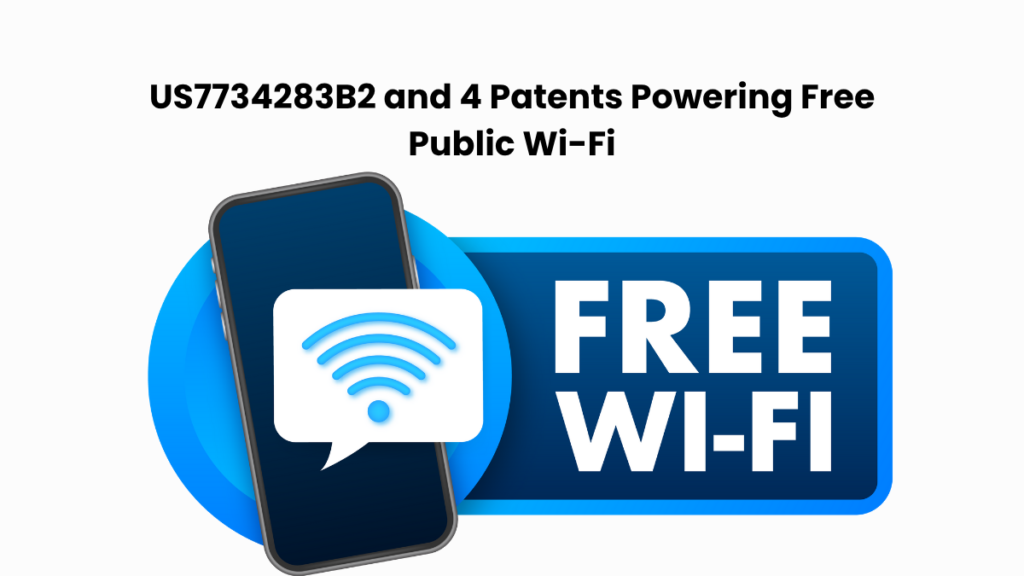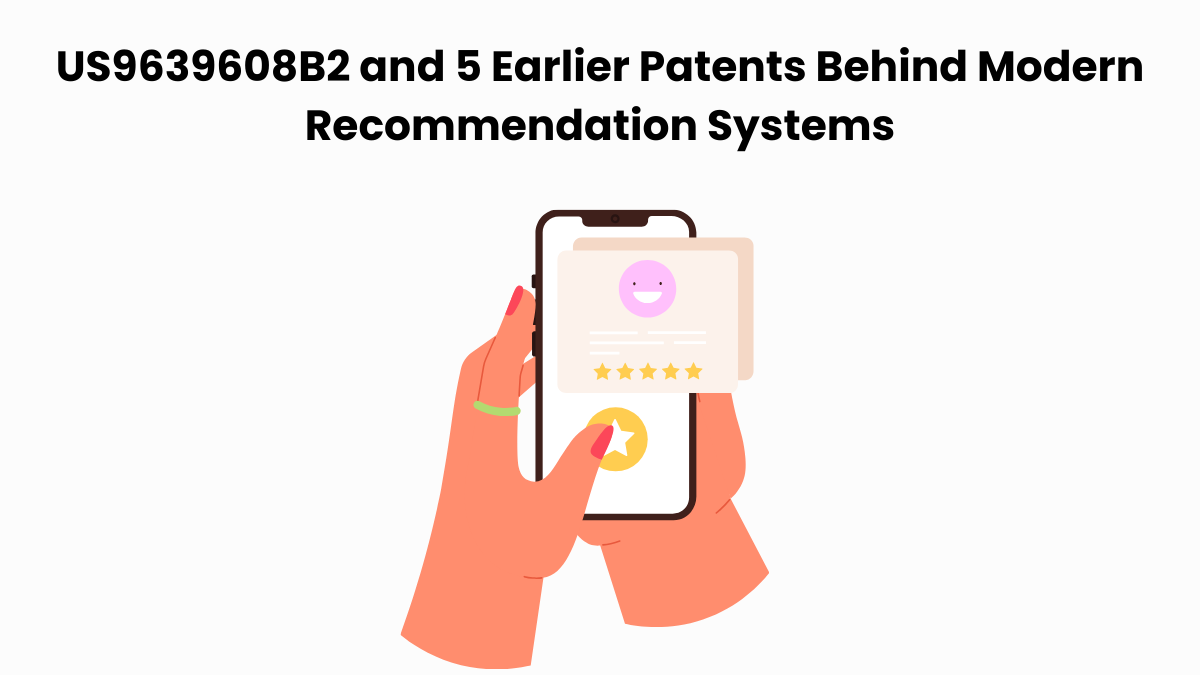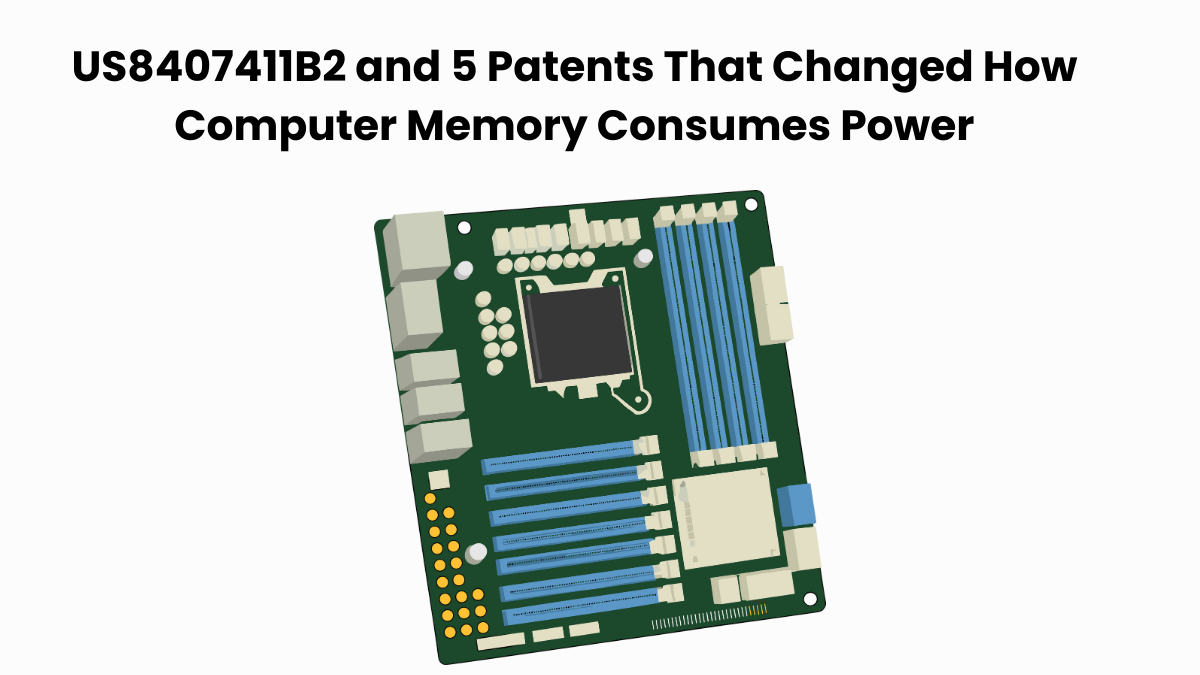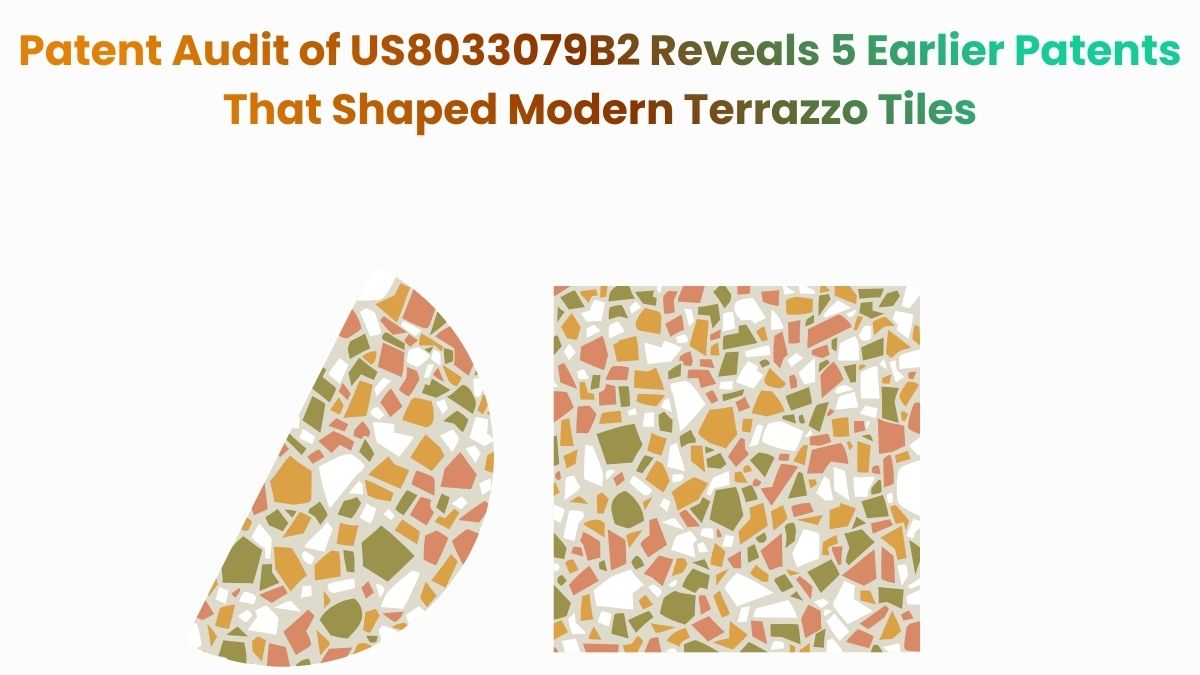Free Wi-Fi feels effortless today. You open your device, watch a short ad, and you’re online. Behind that convenience lies a smart system that redefined how public networks work.
Patent US7734283B2 introduced the model that lets users access the internet simply by viewing sponsored content. Instead of paying for connectivity, users earned access through ads, creating a sustainable, self-funding way to stay connected.
The patent turned content exposure into a form of digital currency, powering free internet in hotels, airports, and cafes around the world.
To understand how this idea evolved and whether similar innovations existed around the same time, we turned to the Global Patent Search (GPS) tool. Before we delve into the results, let’s take a quick look at the patent and the technology behind it.
How US7734283B2 Made Ad-Supported Wi-Fi Possible
Patent US7734283B2 describes a method for enabling free wireless internet access via a hotspot after the user views a piece of sponsored or customized content.
The system includes a management platform, a wireless access point (Hot Spot), and a mobile user station (such as a smartphone or laptop). The user connects to the hotspot, views advertising content for a set period, and gains Internet access without requiring pre-purchased credentials or paid subscriptions.

Source: US7734283B2
What US7734283B2 Covers: Key Technical Features
Here are the key features covered in the patent.
- Ad-based Wi-Fi access: Users can connect to a public Wi-Fi network for free after watching a short advertisement or sponsored message.
- Smart content management: A central system decides which ad or message to show based on where the Wi-Fi hotspot is located.
- Automatic connection: Once the ad finishes playing, the system automatically logs the user in or gives a quick “Connect Now” button.
- No payment needed: Instead of charging users, the system earns revenue from advertisers, turning ad views into the cost of access.
The invention covers mechanisms foundational to many modern public Wi-Fi login experiences, especially those involving free access in exchange for advertising.
As such, it targets companies that operate or manage hospitality networks, carrier-grade hotspots, or app-based access platforms, all of which may rely on similar systems. Its broad claims and commercial relevance make it a strategic patent for litigation.
Fun Fact: Patents that shape how user data is managed and transmitted often end up in aggressive litigation. US9454748B2 is an example of how even questionnaire-based systems can become enforcement tools across industries.
4 Connected Inventions Shaping the Future of Public Wi-Fi
Using the Global Patent Search tool, we surfaced a range of inventions that explored similar ways to manage and monetize wireless access. These patents reveal how early innovators approached session control, authentication, and ad-supported connectivity, laying the groundwork for the systems that power public Wi-Fi today.
1. US20040203602A1
The patent US20040203602A1, filed on December 24, 2002, outlines a system for managing access to wireless hotspots using an authenticating entity and a wireless portable device. It provides a framework for establishing a session between a user station and a wireless access point, overseen by a management or authentication platform.
How US20040203602A1 Works
- Three-part connection system: The setup includes a central management server, a Wi-Fi access point, and a user’s device, all working together to control who gets access.
- Smart login process: When a user tries to connect, the Wi-Fi access point sends a unique ID to the management platform to verify the device.
- Ad-supported access concept: The system also hints at showing short ads related to the hotspot before granting access, an idea that connects closely with the ad-based login in US7734283B2.
Where Does US20040203602A1 Overlap with US7734283B2:
Both patents are built around a central management platform controlling hotspot access through user-device communication.
The 2002 patent lays the foundation for identifying and authenticating users across multiple wireless points, while US7734283B2 extends this concept by linking advertising-driven authentication to the same architecture.
The overlap lies in the shared idea of using an intermediary platform to authorize connections dynamically, making content or contextual data part of the login flow.
To see how wireless networking patents evolved early on, check out our piece on Who Invented Wi-Fi?
2. US20040053613A1
The patent US20040053613A1, filed on December 12, 2002, outlines a system for maintaining wireless connectivity as a portable device moves between wireless access areas, ensuring seamless handoff and session continuity.
The invention includes wireless access points, a service provider platform (acting as a management entity), and mobile devices, working together to authenticate and manage wireless sessions.
How US20040053613A1 Works
- Smooth Wi-Fi handoff: The system helps your device stay connected while moving between different Wi-Fi areas, so the session continues without interruption.
- Smart authentication: Each Wi-Fi point talks to a central platform that verifies the device and keeps the connection active.
- Quick reconnection: The network remembers user details, so you can reconnect easily without repeating the full login process.
Where Does US20040053613A1 Overlap with US7734283B2
Both patents focus on centralized management of wireless sessions through coordinated communication between user devices, access points, and a control platform.
The 2004 invention centers on maintaining uninterrupted connections as users move between hotspots, while US7734283B2 applies similar communication logic to manage ad-triggered access initiation.
Their overlap lies in how identifiers and authentication exchanges are handled, ensuring a smooth, controlled session experience across different connection points.
For a deeper look at how modern systems enable persistent, bi-directional communication over HTTP, see our detailed breakdown of US7756983B2 and its relevance in WebSock v. Postman.
3. JP2004164576A
JP2004164576A, filed on June 20, 2003, outlines a user authentication method in a public wireless LAN service system involving a wireless user terminal, access point, and an authentication server.
It describes how a wireless LAN user connects to an access point, communicating with an authentication platform to process login credentials and establish secure session access.

Source – JP2004164576A
How JP2004164576A works
- Simple login process: When a user connects to Wi-Fi, their device automatically talks to an authentication server that checks their identity.
- Automatic credential handling: The system remembers user credentials, so the next time they connect, they don’t need to re-enter any details.
- Secure connection setup: It ensures that only verified users can access the network, keeping the session private and safe.
Where Does JP2004164576A Overlap with US7734283B2
Both patents aim to make connecting to public Wi-Fi smoother and more secure.
JP2004164576A focuses on automated authentication, while US7734283B2 builds on this idea by adding an ad-viewing step before login.
In both systems, users get quick and controlled access through a central platform that manages login and connection, one prioritizing security, the other monetization through sponsored access.
Editor’s note: If you’re exploring how secure onboarding evolved, our article on US8639935B2 explains how devices authenticate and activate without manual setup.
4. JP2004186846A
The patent JP2004186846A, filed on December 2, 2002, outlines a wireless network system that enables users to access local hotspots and receive communication services, including internet connectivity, through partnerships with telecommunications carriers.
The system includes a management platform (telecom operator), wireless access points (hotspots), and end-user stations (devices).
How JP2004186846A works:
- Carrier-managed access: The telecom operator controls user authentication and manages connections across different hotspots.
- Automatic login for subscribers: Users with valid carrier subscriptions are recognized instantly, allowing them to connect without entering credentials.
- Shared network model: The system links multiple hotspot providers under one network, giving users a seamless experience wherever partner connections are available.
Where Does JP2004186846A Overlap with US7734283B2
Both patents use a centralized system to manage how users access Wi-Fi.
JP2004186846A relies on carrier-based subscriptions for automatic authentication, while US7734283B2 introduces ad-based access instead of user accounts.
The connection lies in their shared goal i.e., simplifying how people connect to public wireless networks by removing manual login steps and letting background systems handle the process.
Together, these inventions trace the early evolution of public Wi-Fi, from centralized authentication systems to carrier-managed and ad-driven access models.
Each patent adds a layer to how modern hotspots handle connection, identity, and monetization, setting the stage for a more connected, content-powered web.
Mapping the Innovation Landscape with Global Patent Search Tool
When exploring technologies that shape modern wireless connectivity, it’s essential to understand how similar inventions address the same technical challenges. The Global Patent Search tool makes this easier by surfacing patents that focus on Wi-Fi authentication, hotspot management, and ad-driven access models.
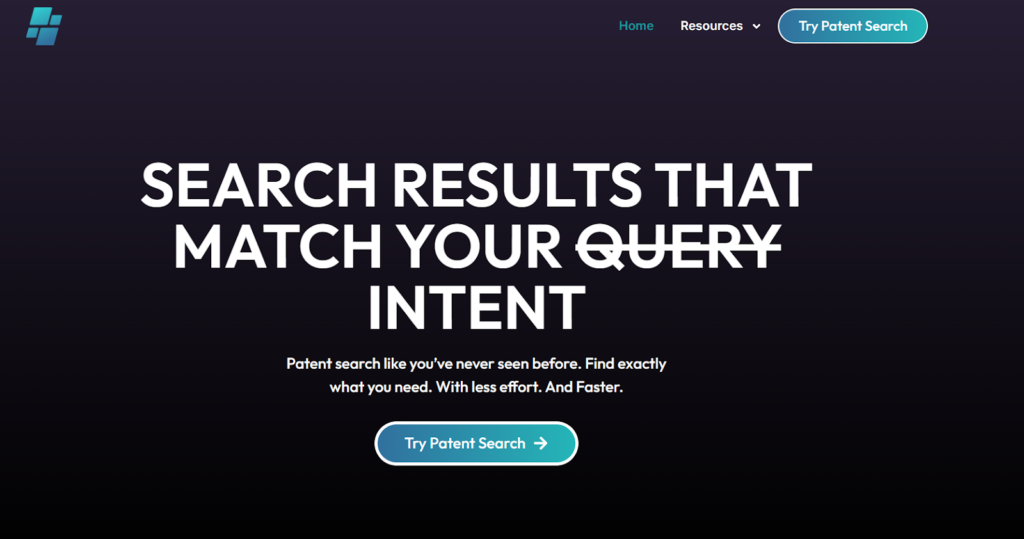
Here’s how you can use the tool to explore this technology space:
- Enter the patent number: Start your search by entering US7734283B2 into the Global Patent Search tool. You can also use keywords like “Wi-Fi hotspot,” “ad-supported connectivity,” or “wireless access authentication.”
- Review curated snippets: GPS shows focused snippets instead of full claims. These excerpts highlight how each invention handles user verification, content-triggered access, or network coordination.
- Find similar patents: The tool identifies related inventions that tackle comparable challenges, from managing hotspot sessions to synchronizing user logins and advertising systems.
- Explore across industries: Many related innovations extend beyond traditional networking, linking to telecom systems, mobile platforms, and location-based services, thus offering a broader view of connected technologies.
Even if your goal is to defend or assert a patent, GPS helps cut through complexity and focus on what’s most relevant. All in all, the tool is a valuable resource for discovering emerging ideas, understanding connectivity architectures, and tracing how ad-supported and managed Wi-Fi technologies continue to evolve.
Fun Fact: Both Quantion and ContactWave patents deal with how mobile devices interact with backend systems to deliver user-facing sessions. Read this article to know more.
Disclaimer: The information provided in this article is for informational purposes only and should not be considered legal advice. The related patent references mentioned are preliminary results from the Global Patent Search tool and do not guarantee legal significance. For a comprehensive related patent analysis, we recommend conducting a detailed search using GPS or consulting a patent attorney.

